.jpg?t=1536936679150&width=990&name=How%20Chatbots%20Give%20You%20a%20Recruiting%20Advantage%20%20%20(1).jpg)
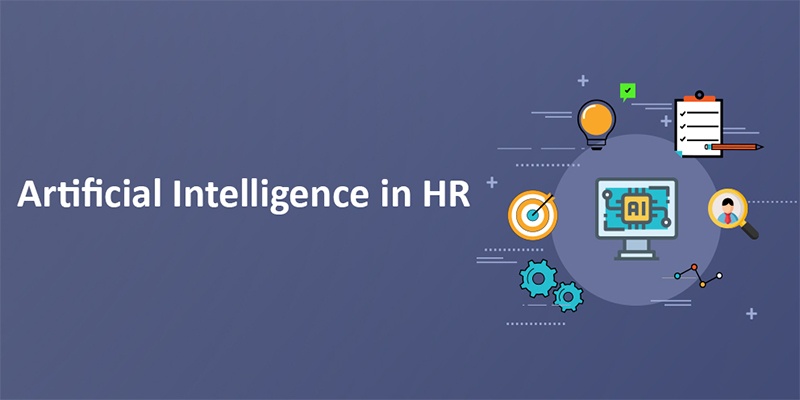
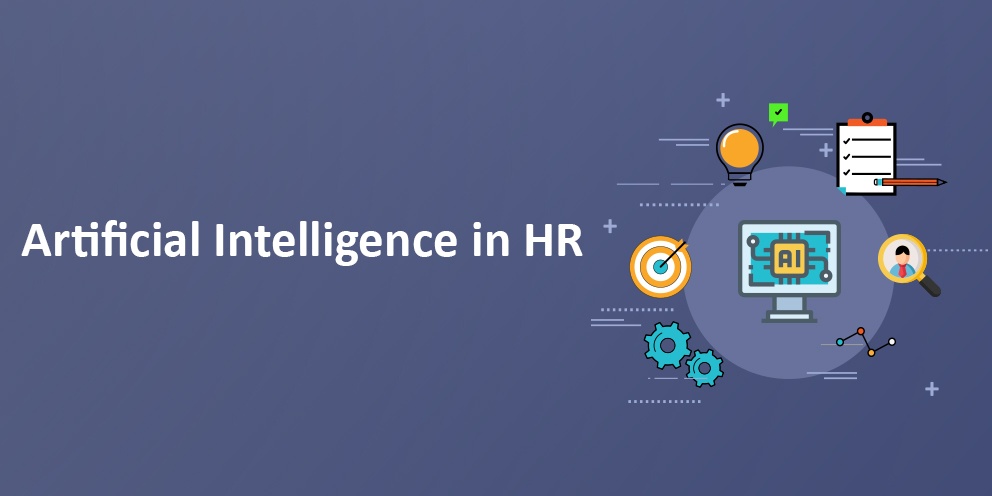
/Chasma%20Blog%20Post%20Images/How%20AI%20in%20HR%20can%20save%20time%20and%20drive%20efficiency_IA.png?t=1536936679150&width=991&name=How%20AI%20in%20HR%20can%20save%20time%20and%20drive%20efficiency_IA.png)
The moment you log into your office mail, you see subject lines like…
Immediate requirement in Sales team
Immediate update required for new hire training
New Compliance Deadlines this month
The Coffee Machine is broken!
Before you can get started, a manager calls to ask you about recruiting status on his engineer requisition.
Many times you miss parts of the conversations as you always have a mobile to your ear and eyes on an email on the monitor.
You turn your head to see a colleague at your desk wanting to chat - which ends with ‘Good Day’. This so-called ‘good day’ actually ends up with many regrets like forgetting to inform a manager about a skype interview schedule, falling back on priorities, tough times with your boss, going home late, and failing at your personal promises.
Your day ends just when you felt it had started. You hardly find time to work on building strategies that elevate your culture and engage talent.
Is more time all you need?
What if you had a tool that not only saves you time but also enhances your effectiveness - a technology tool that can wisely handle your routine tasks like recruiting and onboarding activities, monitoring training and compliance, and coordinating with managers and staff to communicate on updates.
Enhance efficiency by implementing AI in HR
Artificial Intelligence - where we make machines work, think and react much like humans, can be a boon if adapted well to your HR processes.
And the fascinating fact about AI is, the more you work with it, the better it learns and adapts.
AI can effectively manage the day-to-day activities of your HR team and here are few ideas to help you start thinking about it.
How AI can help Recruiting improve candidate profiling
Implementing AI in your recruiting processes saves time. AI can help you identify the right candidate profile that matches your skill set. While you let your machine deal routine repetitive tasks, you can work on critical things like having one on one conversations with candidates and drawing insights to improve communications.
/Chasma%20Blog%20Post%20Images/How%20AI%20in%20HR%20can%20save%20time%20and%20drive%20efficiency_IC.png?t=1536936679150&width=600&name=How%20AI%20in%20HR%20can%20save%20time%20and%20drive%20efficiency_IC.png)
While you onboard, reach out to your New Hires with answers to their questions - before they ask
During the process of onboarding, you have to coordinate with the new hires right from day one until they establish strong relationships with peers and managers. Many times it is hard to reach out to every new hire and provide instant guidance.
This is where AI can help you. You can deploy an AI-based virtual assistant that will tackle new hire queries and offer answers so you can focus on tasks that need human intervention.
In your training, let AI recommend the right courses for your employees
AI can analyze the kinds of training that have been successful to make better recommendations for your employee development plans.
Achieve smoother communication flow
With AI, you can train your machine to respond like the way you do. Your employees need not wait for answers. They can get instant help with their questions.
AI will give you the gift of time to focus on elevating your company culture and improving the employee experience. Not only that - your AI will provide spontaneous service by finding answers much faster than a human can.
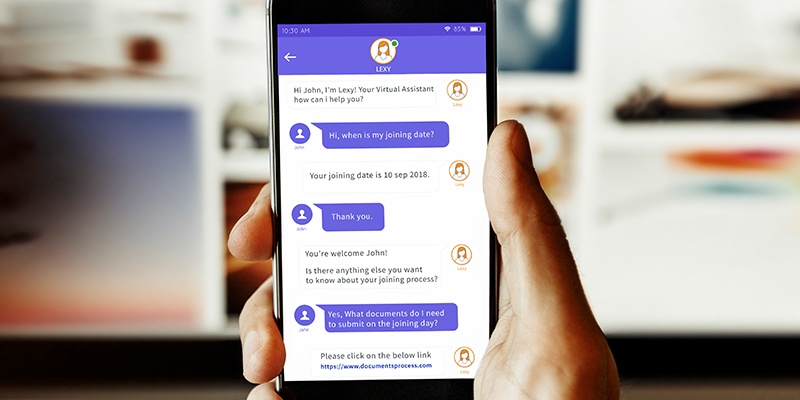
HR departments are undergoing a transition – one that aims to offer people the best possible workplace experience. Fifty-six percent of respondents in the Deloitte 2017 Global Human Capital Trends survey are redesigning their HR programs for digital and mobile tools. Thirty-three percent of HR teams are using some form of artificial intelligence (AI) tools to deliver HR processes, and 41 percent are actively building mobile apps to deliver HR services.
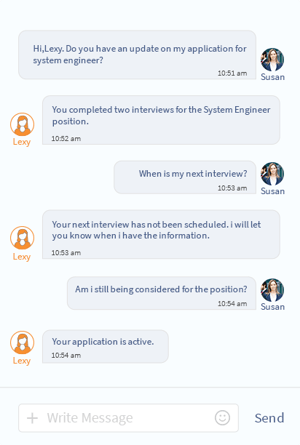 Your people expect a motivating experience in the workplace – one that
Your people expect a motivating experience in the workplace – one that
If your employees are not motivated, their tenure is at stake. About Forty percent of workers said they left a company because they lacked access to state-of-the-art digital tools and 58% said they need to work elsewhere to gain digital skills.
The benefits of automation with AI are more than efficiency. You also improve the user experience for your prospective hires, employees, managers, and the HR team. Let’s take a look at some of the solutions being used in today’s leading organizations.
Maximize your HR service delivery efficiency with AI
AI will be the game-changer in the HR industry, handling many routine tasks with efficiency and speed. 73% of HR professionals agree that chatbots will be an important interface to provide real-time answers for employees, and 39% of professionals feel they will use AI at a high degree by 2022.
Make AI a member of your recruiting team
Screening stacks of resumes to find the right ones, finalizing them, and analyzing their behavior during interviews are some tasks that grab a lot of your time.
AI can analyze candidate profiles much faster than humans, and they are more accurate. Algorithms can capture the emotional intelligence of your candidates using facial recognition and neuro-linguistic programming. You can also get rid of 'unconscious bias', a common human mistake in hiring.
Improve and sustain employee engagement with data-driven strategies
Employee engagement is critical. Employees who are engaged are 27% more likely to report “excellent” performance. Traditional surveys and one-to-one conversations to fix engagement issues will take up a lot of your time and give you meager results. AI based chatbots and messaging platforms can communicate with and engage your employees. They can interact, capture emotions, and help you identify if any of your employees are disengaged.
Drive performance with personalized development plans
Your managers need accurate data to plan employee development. Some of the ways you can do this is through assessments, conversations with employees and managers, and reviewing the training strategies available. Then you must analyze all the data you have in your hand. AI embeded into your L&D processes can offer personal training recommendations and support development plans.
AI in HR is the Present and the Future of HR
With AI, you can engage your people and prospects with accurate information, ease communication, enhance your hiring efficiency, make training recommendations for your people, and capture emotions to identify those disengaged at work.
Make artificial intelligence your helping hand for managing your routine workload, so you can focus on the human side of things.
.jpg?t=1536936679150&width=990&name=Chatbot%20in%20hr2%20(3).jpg)
Chatbots are making their way into HR. At the beginning of this wave of change, we predict chatbots will change the relationship people have with HR technology. As the application of this technology matures, it will fundamentally alter the relationships people have with each other.
Chatbots are software robots that enable technology to interact with humans on human terms. With a well-trained bot, users can say or type what they need, and the bot will locate and provide information, answer questions, and take any action you train them to do. These virtual assistants can be trained to handle repetitive tasks that would typically require users to log in to an HR application, remember how to use it, and adapt unique their human needs to preconfigured lists of values designed for clean reporting.
With these capabilities, we understand why many organizations choose to apply bot technology to HR self-service as a first effort. It has a profound impact on the user experience, and it makes HR more efficient by handling many tasks and requests formally handled by humans. The quick return on investment makes it easy to build a business case.
However, there is much more to chatbots than efficiency. As chatbots grow into maturity, they will make both your HR group and the people it serves more connected and productive. The underlying technology in chatbots, Robotic Process Automation (RPA), has a significant impact on operating costs, but it also shifts human effort from routine tasks,1 allowing them to focus more on building human relationships that foster creativity and innovation.
How Chatbots Will Change Relationships
How do these efficiencies in communication translate to higher value-add activities, and what are those activities? We explored three situations where we see significant gains.
Communication with job candidates influences how people feel about joining an organization. In a 2017 study, IBM found that only 57% of candidates said they were kept well informed during the hiring process, and only 63% were very satisfied with the candidate experience. Applicants who had a good experience were 38% more likely to accept a job offer. The study also found an impact on attitudes toward the company and subsequent sales.2
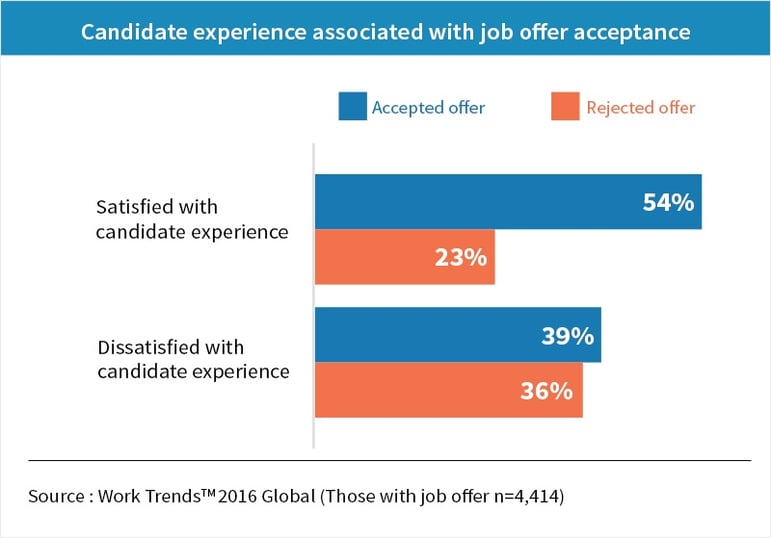
Chatbots handle many of the routine communications that recruiters can often forget, like acknowledging applications and resumes, sending reminders about upcoming tasks, scheduling interviews, and even administering assessments. The big bonus here is that they can help overcome the lapses in communications that make applicants vulnerable to being snatched away by competitors.
Recruiters have more time to work with hiring managers. According to research by Bersin by Deloitte, that relationship is the most influential predictor of talent acquisition performance.3
Recruiters have more time to work with prospects and candidates. The most effective recruiters are those who build relationships with potential employees. Top candidates are much more likely to want to work for an organization where they have a positive relationship with people in it.
L&D has gone through some rapid changes in the past few years. We have new delivery modes in e-learning, instant video, and micro-learning. Adaptive learning driven by artificial intelligence promises to take learning on the job to a level of effectiveness we could not even imagine just a couple of years ago.
All those changes have brought with them a new world of complexity to both L&D staff and the people they serve. Chatbots hold the promise of making that complexity manageable.
Even without AI, chatbots can reduce the complexity of learning for the end-user. Instead of searching through catalogs, course lists, YouTube, the intranet, and who knows where else, users can tell chatbots what they need, and a chatbot will deliver.
Chatbots can be trained to offer up suggestions for learning based on an individual’s career development plan or find recommendations for a new learning path. They could also handle many more time-consuming repetitive and mundane tasks, like managing an individual’s training calendar, locating resources, and producing reports.
Support libraries for administrators can become conversational helpers instead of inanimate lists of technical material. They can even be trained to manage routine, repetitive tasks.
Finally, we can bring learning into the flow of work. What employees need information, learning in the moment, or a refresher on a new procedure, they don’t need to stop what they are doing and search for what they need. They can assign that task to a virtual assistant who will never tire of being helpful. Your people can spend their time learning instead of searching for what to learn.
Chatbots in Performance
The transition from annual performance reviews to ongoing conversations about performance is a long-term culture change project. Anything we can do to facilitate the conversations can be a benefit to both employees and their managers.
Knowledge workers can spend up to 40% or more of their time looking for information they need to do their jobs. Imagine how you could help them by providing a virtual assistant that has indexed every resource in your content repositories.
How about reminders for busy managers? Think about a virtual personal assistant the will do this:
Imagine how your managers will feel when they can view any employee profile, any report, and their management coaching resources merely by asking for them.
The examples given above are only a few of the possibilities for chatbots to improve communication and performance in your organization. Employee self-service is an excellent place to start, but we encourage you to move on to more sophisticated and productive applications as you can. The possibilities are endless.
References:
2. https://www-01.ibm.com/common/ssi/cgi-bin/ssialias?htmlfid=LOW14341USEN.
3. http://blog.bersin.com/surprising-1-predictor-of-talent-acquisition-performance.
.jpg?t=1536936679150)
/Chasma%20Blog%20Post%20Images/Chatbots%20in%20HR%20AI%20for%20people%20not%20robots_IA.png?t=1536936679150)
Rereading Zachary Chertok’s article about artificial intelligence in human capital management reminded me of why we do what we do. Chertok explained the tug-of-war going on between Wall Street and the human capital technology market. Wall Street bases its vision of artificial intelligence on the replacement value of human labor. We in the HCM technology business seek to use AI to help humans work smarter.
From the 1980's until just a few years ago, HR technology focused on making HR work more efficient. It worked. HR teams are now a tiny fraction of the size they were 30 years ago.
There was a cost. For the employee who needed to use HR services, the experience changed from a face-to-face conversation with a helpful assistant to complicated self-service software. We hated it. Not that it was so hard to use once we got used to it, but we used it so seldom that we had to relearn it. The conversation changed from Hey, Jack, can you help me sign up for leadership training? to Where is that #@&% user guide? Never mind. I’ll just call Jack - but Jack’s busy.
Recently, vendors have been focused on the user experience and have made great strides in usability, both on desktops and in mobile apps. But it is still software.
Artificial intelligence is changing the game. Helpful chatbots and textbots surround us in our daily lives. If you want to get directions, find a recipe, or call a friend, we can ask Siri, Alexa, Cortana, or one of many other virtual assistants for help. And now they are coming to HR.
Artificial intelligence is on the cusp of helping us do just about everything in HR better. We can make better hiring decisions, promote the right people, and understand the learning needs of our workforce with the help of algorithms. But we think chatbots in HR will have a more significant impact because they will change how people feel about work as they are doing it.
Instead of sending an email or leaving a voicemail with busy HR staff and waiting hours or days for a response, workers will now be able to use AI-driven virtual assistants to get instant answers to their questions. If they want to submit a request for vacation time, they can just ask.
Because of the wonders of natural language processing (NLP) and machine learning, these virtual assistants will learn from their interaction with humans, and they will provide data from their conversations to help HR deliver better service.
Soon, we will be able to ask questions like these:
Achal Khanna, CEO of SHRM India, hinted last December that 2018 is the year of Chatbots in HR. They are already here – helping people, not replacing them.
/Chasma%20Blog%20Post%20Images/Are%20You%20Ready%20for%20your%20HR%20Virtual%20Assistant_IA.jpg?t=1536936679150&width=991&name=Are%20You%20Ready%20for%20your%20HR%20Virtual%20Assistant_IA.jpg)
Chatbots have arrived in HR, and we are celebrating. After three decades of chasing the user experience dream, we may finally have someone (or something) that won’t complain about doing “HR stuff.”
Before we automated HR, we had armies of people who made a living doing the tedious manual work of handling employment and payroll transactions. For the employee, requesting vacation time was a matter of scratching a couple of dates on the paper form and handing it off to a supervisor, who handed off to the HR clerical staff. From the employee perspective, taking a day off meant saying “Hey Boss, I need to take my kid to the doctor on Friday,” leaving the manager and HR to handle the administrivia.
The first wave of HR automation made HR more cost-efficient. The army of workers became much smaller, and fewer people made a living doing tedious computer and manual work.
Then came self-service, when HR pushed the work out to employees and their managers.
They hated it. Managers and employees flooded HR with calls about how to handle transactions, so a cadre of administrative worker arose to handle the tasks for everyone in the business unit or work group because people balked at learning how to use the software.
With the growth of cloud platforms, talent management platforms, payroll, and time and attendance, competition drove the effort to make those systems easy enough for anyone to use.
People still hated it. Organizations deployed wave after wave of new systems with a lot of “change management” and hype, only to see the enthusiasm dissipate over time.
The trouble is that nobody who already has a job to do in the organization wants to do “HR stuff.” We don’t know anyone who becomes joyous at the prospect of applying for Family or Medical Leave. We have never heard anyone say, “I’m so happy! I get to fill out my online timecard!” or “I love doing those development plans!”
In practice, we just want to get the HR stuff done so we can get back to what we like doing.
Today, instead of those vast armies of clerical workers, we have skeleton HR staffs populated by professionals and semi-professionals. They spend up to 30 or 40% of their time answering questions from managers, employees, prospective employees, and ex-employees about how to manage their transactions or where to find the information they need to do it.
Relief is here. Cognitive computing, natural language processing (NLP), and artificial intelligence (AI) are working with text and voice messaging to create virtual assistants in our personal lives. Millions of us are using Cortana, Siri, Alexa, and Google Home.
We want the same experience at work. HR technology providers are responding, but small startups and niche providers are moving faster. Chatbots and text bots are currently used primarily in customer self-service, but they are moving quickly into HR, among other areas.[1]
Now is an excellent time for companies to get in on the ground floor of HR virtual assistants to improve their productivity and to influence the direction these products take.
Before you jump into the mix, there are four things we recommend for you to think about as you prepare for your virtual assistants.
Sign up for more of our conversation about virtual assistants and the future of work. We look forward to hearing of the success stories of having assistants who are happy to do that “HR stuff” we all hate to do.
References:
.jpg?t=1536936679150&width=990&name=How%20Chatbots%20Give%20You%20a%20Recruiting%20Advantage%20%20%20(1).jpg)
Your applicants spend a lot of time and effort to get into your talent pipeline. A pleasant candidate experience is the best first impression you can offer them. It sets the tone for the entire employment relationship.
Nothing hurts your relationship with them more than your silence. Not only that - applicants who have had a good experience are 38% more likely to accept a job offer. And if you leave them dangling, you will never know if they could qualify for another open position in your organization.
Does your inbox have a couple of emails from prospect candidates saying, "offer declined"? Tried calling them and not getting connected?
Is it because in the rush of administrative work you forgot to contact them?
Your prospect candidates care how they are treated. Their experience tells them how a company values its people.
Nearly 60% of job seekers have had a poor candidate experience, and 72% have shared their experience on online employer review sites such as Glassdoor.com (LinkedIn).
Nearly 4 in 5 candidates (78%) say the overall candidate experience they receive is an indicator of how a company values its people (LinkedIn).
80% of job seekers say they would not reapply to a company that didn’t notify them of their application status (Lever).
Engage candidates with timely communication
A chatbot acts as a real-time medium of communication and engagement. It responds to routine questions immediately and reaches out to a human right away when necessary.
Reduce candidate drop-off rate
Most companies have an 80% drop-off rate during their application process.
A chatbot integrated with your recruiting system sustains the communication with your candidates at regular intervals which in turn reduces the drop-off rate.
Lead to greater brand advocacy
Fortune magazine reports that 96% of candidates say a positive experience would encourage them to refer someone else to an organization.
Chatbots can take a load off your shoulders and ensure a positive candidate experience during the early stages of recruitment. When your candidates have regular updates about their status in the submission pipeline, they are more likely to promote your brand.

After years of lagging, recruiting professionals are catching on to modern marketing techniques. Analytics, machine learning, and neuroscience are defining new ways of sourcing, screening and selecting candidates. Recruiters who learn to leverage these innovations will become better at their work. New methods promise to improve organizational performance and productivity.
Despite alarmist warnings, artificial intelligence is not about to replace recruiters because it does not yet exist. Depending on how you define it, may never become a reality. No machine achieves intuitive human thinking. They can learn faster than humans, but only within specifically programmed parameters. What will define the future of recruiting will be the partnership between recruiters and their machines.
Machine learning and biometrics (a subset of neuroscience) are impacting how recruiters operate. The transformation has already begun in sourcing, screening, and selection.
Marketing has been using data to refine its messaging for decades. Analytics and biometrics have enabled marketers to fine-tune messages to the needs of individuals and to know who is likely to respond, where, and when. If you apply the same principles to recruiting, you can radically change the way you source candidates.
The standard practice is to broadcast job openings to the entire world and sift through hundreds of resumes to find a few suitable candidates. By adopting analytical tools developed in Marketing, you can identify likely candidates and use analysis of their online behavior to predict when they might make a move. You can then target those individuals and gain a much higher response rate than with mass marketing.
Targeted recruiting shows promise in attracting people who are strong candidates. Coupled with job descriptions that focus on objectives rather than lists of requirements, you can start with a much better slate of possibilities.
Psychometric assessments have proved their value over the past several decades, but machine learning promises to take applicant screening to a new level. Algorithms can use a wide variety of information sources to determine the suitability of candidates without the inherent biases of human screening. Machine learning can identify predictors of success, and can help companies eliminate the artificial barriers of “creeping credentials.” As the industry gathers data, we find that education and experience are much less valuable than other attributes. Machine learning promises to make that information more accessible to recruiters.
Machine learning can help companies make better selections and avoid many of the discrimination pitfalls in selection. In a world where one in five interviewers asks an illegal question, unbiased selection tools can improve your diversity initiatives and reduce your exposure.
Video interviews enable analysts to evaluate facial expressions, vocabulary, tone of voice, and many other indicators that a live interviewer will miss. It allows us to create a quantifiable picture of each candidate. As the amount of data grows, the predictions will become much more accurate, enabling recruiters to eliminate many of the natural biases in the selection process.
Predictive analytics are not a panacea. Algorithms can inherit the biases of their creators, and machines cannot replace human judgement.
Machine learning requires massive amounts of data, and making defensible employment decisions requires accuracy and validation. Smaller companies who do not have sufficient numbers of people to support accurate analysis would do well to engage a consulting firm with enough cases to support their validations.
Bio-metrics and machine learning can help recruiters make better decisions and manage their workload, but they cannot replace human conversation. Some analysts tout chatbots and human-like talking computers to handle routine communications with candidates. History may prove us wrong, but we believe nothing can replace a recruiter’s personal touch.